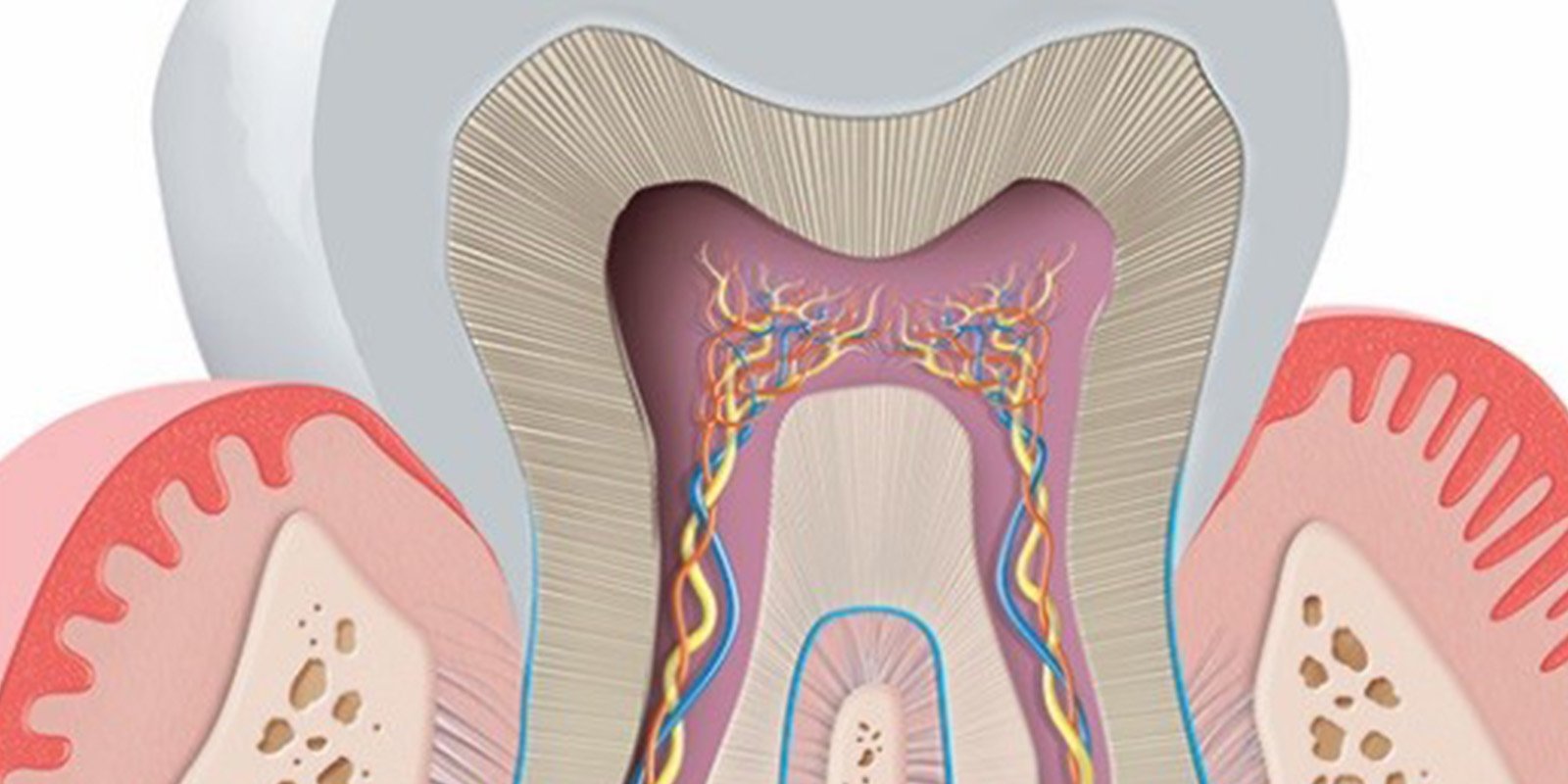DENTAID Oral Health
News for pharmacy professionals
Keys for preventing and fighting caries
13 Mar 2015

Caries is one of the most common dental disorders in Spain, as it affects over 90% of the population. Proper oral hygiene is essential for preventing its onset.
Caries is a disease that affects between 92 and 94% of adult Spaniards over the age of 35 and 55% of school children in the country, and it is the main cause for tooth loss. Up to 17% of all Spaniards between the ages of 65 and 74 have no natural teeth, mainly due to caries or periodontal diseases(1).
Caries is defined as a transmissible multifactorial, infectious disease which is characterised by progressive destruction of dental tissues. This destruction is due to demineralisation that is caused by acids produced by the bacteria present in oral biofilm when these metabolise dietary carbohydrates. This is a multifactorial disease because it depends on four factors: host (primarily, saliva and morphology/placement of teeth), microorganisms (in the form of oral biofilm), food (carbohydrates) and time.
Oral biofilm is composed of diverse bacteria that colonise the oral cavity. The main bacteria involved in the caries process is Streptococcus mutans, followed by Lactobacillus acidophilus. This oral biofilm uses carbohydrates from our diet as its substrate, and as a result from its metabolism, acids are produced, such as, for example, lactic acid. These acids attack the enamel and cause the pH of the oral cavity to drop, and is normally neutralised by saliva's buffering capacity. When the decrease in pH reaches a critical point of 5.5 (or lower), the enamel starts to dissolve and teeth demineralise. Later, over time, pH returns to its initial value (neutral pH, 7) from saliva's buffering effect, and teeth are remineralised, thanks to the existing Ca2+, PO3- and F- ions, and a demineralisation/remineralisation balance is attained(2).
Caries needs all three of these factors to develop. An experimental study found that a high sugar intake in animals without oral biofilm did not result in caries. However, if human cariogenic bacteria are inoculated in the mouth of just one animal who meanwhile forms part of a group that is fed a diet based on fermentable carbohydrates, the entire group [of animals] develops rampant caries; in other words, it is spread from the first animal infected to the rest of the group(3,4).
CARIES FORMATION
If proper oral hygiene is not performed after food consumption, oral biofilm will continue to accumulate over time, and food debris will remain in the mouth, and therefore, acid secretion will take place over and over, and teeth will be exposed to these acids. Baseline pH will be lower, and its decrease after every time food is consumed will be more pronounced and will return more slowly, thereby prolonging enamel demineralisation. Also, every time carbohydrates are ingested, acid production will increase until enamel dissolves without the possibility of being repaired. This is when the (caries) lesion begins to emerge.
At this stage, which is characterised by the appearance of a white spot on the enamel (which must be diagnosed by a professional as it is not noticeable to the naked eye), the lesion can be stopped and even reversed. In order for this to happen, the outpatient treatment (at home) of choice consists of the topical use of fluoride compounds, as fluoride hiders demineralisation and enhances the remineralisation of enamel. Furthermore, the control and treatment by a dental professional is vital in order to monitor the progression of the lesion.
However, if the balance continues to be upset and it is not detained, mineral loss may continue to increase, allowing the lesion to develop into a cavity, which may continue to develop, affecting the dentin and the pulp, and may finally lead to tooth loss if timely intervention by a dentist is not performed.
CARIES PREVENTION AND TREATMENT
Dental hygiene
Therefore, proper prevention will keep us from experiencing caries-related problems. It is also essential to have habits that contribute to remineralisation and that enhance the removal of oral biofilm, thereby reducing tooth demineralisation:
• Controlling your diet is important, since bacteria need a substrate such as carbohydrates to grow and to be able to cause caries. It is wise to modify diet, by limiting daily sugar intake and consumption of sticky foods and snacking between meals. This way, we can control biofilm substrate, the number of drops in pH, and therefore, the demineralisation/remineralisation cycles.
• To remove oral biofilm, it is imperative to maintain good oral hygiene, especially proper toothbrushing combined with the use of interproximal hygiene tools, such as interproximal brushes, dental floss and tape and oral irrigators; as well as chemical elements such as toothpaste and mouthwash that provide different properties depending on their composition.
Fluoride
On a chemical level, topical fluoride is the most commonly used element in the prevention of caries, both in pastes and mouthwashes, thanks to its functions(5):
• Promotes posteruptive enamel maturation: when pH drops, the hydroxyapatite crystals from the enamel dissolve and their components are replaced by hydroxyl and calcium and fluoride ions, forming new hydroxyapatite, fluorhydroxyapatite and fluorapatite crystals, which are more resistant to acid erosion than the hydroxyapatite in enamel.
• Hiders demineralisation: the fluoride present in the biofilm, at the time acid is secreted, moves together with the acid toward the enamel crystals, protecting them from being dissolved.
• Promotes remineralisation: the new compounds that are formed (hydroxyapatite, fluorhydroxyapatite and fluorapatite) are larger crystals that reduce enamel pores, making enamel more resistant.
Therefore, their addition to toothpastes and mouthwashes is very important for daily oral hygiene in the prevention of caries.
In order to remove oral biofilm, it is most important to maintain good oral hygiene, particularly proper toothbrushing combined with the use of interproximal hygiene tools
Hydroxyapatite nanoparticles
Hydroxyapatite, or calcium phosphate, is the third most abundant element in the human body, and the main component of bone tissue and of dental tissue(6). This mineral, thanks to its nanometric size, acquires a mechanism of action that gives it exclusive properties, different from those of larger sized hydroxyapatite crystal; and therefore, they carry out a key role in the remineralisation of enamel.
Recent studies have shown that, because of their nano size, hydroxyapatite nanoparticles can simultaneously repair and prevent initial erosive lesions in the enamel that are caused by tooth surface demineralisation(7,8,9,10).
By integrating with the tooth enamel, hydroxyapatite nanoparticles have the ability to repair grooves, cracks and imperfections deep within the enamel surface, by forming stable and very resistant hydroxyapatite deposits. Furthermore, the deposition of nanoparticles on tooth enamel forms a homogenous and smooth protective layer that is resistant to erosion in low pH conditions(7).
Because they have different mechanisms of action, hydroxyapatite nanoparticles and fluoride work synergistically when combined, which would also increase the formation of fluorapatite, which is much more resistant to acid attack, thereby protecting and fortifying tooth enamel.
Therefore, the use of hydroxyapatite nanoparticles in daily oral hygiene is a new course of action in preventing caries, by repairing tooth enamel and forming an erosion-resistant, protective layer in the presence of low pH conditions
Bibliografía
- Encuesta de Salud Oral en España 2010. Organización Colegial de Dentistas de España.
- Stephan RM. Intra-oral hydrogen-ion concentrations associated with dental caries activity. Journal of Dental Research 1944; 23: 257-266.
- Orland F, Blayney J, Wendell-Harrison R. Use of the germ-free animal technique in the study of experimental dental caries. Journal of Dental Research 1954; 3: 147-174.
- Fitzgerald R, Keyes P. Demonstration of the etiologic role of streptococci in experimental caries. Journal of the American Dental Association 1960; 61: 9-19.
- Boj JR, Catalá wM, García-Ballesta C, Mendoza A, Planells P. Odontopediatría. La evolución del niño al adulto joven. 1ª edición (1ª reimpresión). Ripano Editorial Médica.
- Roveri N, Foresti E, Lelli M, Lesci IG. Recent advancements in preventing teeth health hazard: The daily use of hydroxyapatite instead of fluoride. Recent Patents on Biomedical Engineering 2009; 2: 197-215.
- Huang S, Gao S, Cheng L, Yu H. Remineralization potential of nano-hydroxyapatite on initial enamel lesions: an in vitro study. Caries Research 2011; 45: 460-468.
- Itthagarun A, King NM, Cheung Y-M. The effect of nano-hydroxyapatite toothpaste on artificial enamel carious lesion progression: an in-vitro pH-cycling study. Hong Kong Dental Journal 2010; 7: 61-66.
- Li L, Pan H, Tao J, Xu X, Mao C, Gu X, Tang R. Repair of enamel by using hydroxyapatite nanoparticles as the building blocks. Journal of Materials Chemistry 2008; 18: 4.079-4.084.
- Huang SB, Gao SS, Yu HY. Effect of nano-hydroxyapatite concentration on remineralization of initial enamel lesion in vitro. Biomedical Materials 2009; 4: 034104.
RELATED ARTICLES

18 Nov 2021
Laboratory studies prove that CPC in mouthwashes is effective against different variants of SARS-CoV-2 thanks to its mechanism of action
INTRODUCTION The oral cavity is a route of entry, infection and transmission of microorganisms, including the SARS-CoV-2 coronavirus. Several…

11 Apr 2019
PERIODONTAL DISEASE EXPLAINED FOR THE PHARMACIST
Periodontal disease, aka gum disease, is a set of chronic infectious diseases that affect the periodontium, causing inflammation and/or subsequent…

15 Jan 2019
ORAL HEALTH IN ADULTS OVER AGE FIFTY
As the years go by, the mouth undergoes both anatomical and physiological changes. These changes, together with poor oral hygiene and certain…
Sign up for the DENTAID Oral Health newsletter
Sign up for the newsletter